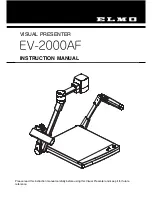
46
Pantera 1M60 and 1M30 User’s Manual
DALSA
03-032-10033-09
Appendix A
Camera Link™ Reference, Timing,
and Configuration Table
Camera Link is a communication interface for vision applications. It provides a
connectivity standard between cameras and frame grabbers. A standard cable connection
will reduce manufacturers’ support time and greatly reduce the level of complexity and
time needed for customers to successfully integrate high speed cameras with frame
grabbers. This is particularly relevant as signal and data transmissions increase both in
complexity and throughput. A standard cable/connector assembly will also enable
customers to take advantage of volume pricing, thus reducing costs.
The camera link standard is intended to be extremely flexible in order to meet the needs
of different camera and frame grabber manufacturers.
The DALSA Camera Link Implementation Road Map (available from the DALSA
website) details how DALSA standardizes its use of the Camera Link interface.
LVDS Technical Description
Low Voltage Differential Signaling (LVDS) is a high-speed, low-power general-purpose
interface standard. The standard, known as ANSI/TIA/EIA-644, was approved in March
1996. LVDS uses differential signaling, with a nominal signal swing of 350mV differential.
The low signal swing decreases rise and fall times to achieve a theoretical maximum
transmission rate of 1.923 Gbps into a loss-less medium. The low signal swing also means
that the standard is not dependent on a particular supply voltage. LVDS uses current-
mode drivers, which limit power consumption. The differential signals are immune to ±1
V common volt noise.
Camera Signal Requirements
This section provides definitions for the signals used in the Camera Link interface. The
standard Camera Link cable provides camera control signals, serial communication, and
video data.
Video Data
The Channel Link technology is integral to the transmission of video data. Image data
and image enable signals are transmitted on the Channel Link bus. Four enable signals
are defined as:
• FVAL—Frame Valid (FVAL) is defined HIGH for valid lines.
• LVAL—Line Valid (LVAL) is defined HIGH for valid pixels.
Summary of Contents for 1M30
Page 16: ...16 Pantera 1M60 and 1M30 User s Manual DALSA 03 032 10033 09 ...
Page 34: ...34 Pantera 1M60 and 1M30 User s Manual DALSA 03 032 10033 09 ...
Page 39: ...Pantera 1M60 and 1M30 User s Manual 39 DALSA 03 032 10033 09 ...
Page 45: ...Pantera 1M60 and 1M30 User s Manual 45 DALSA 03 032 10033 09 ...
















































